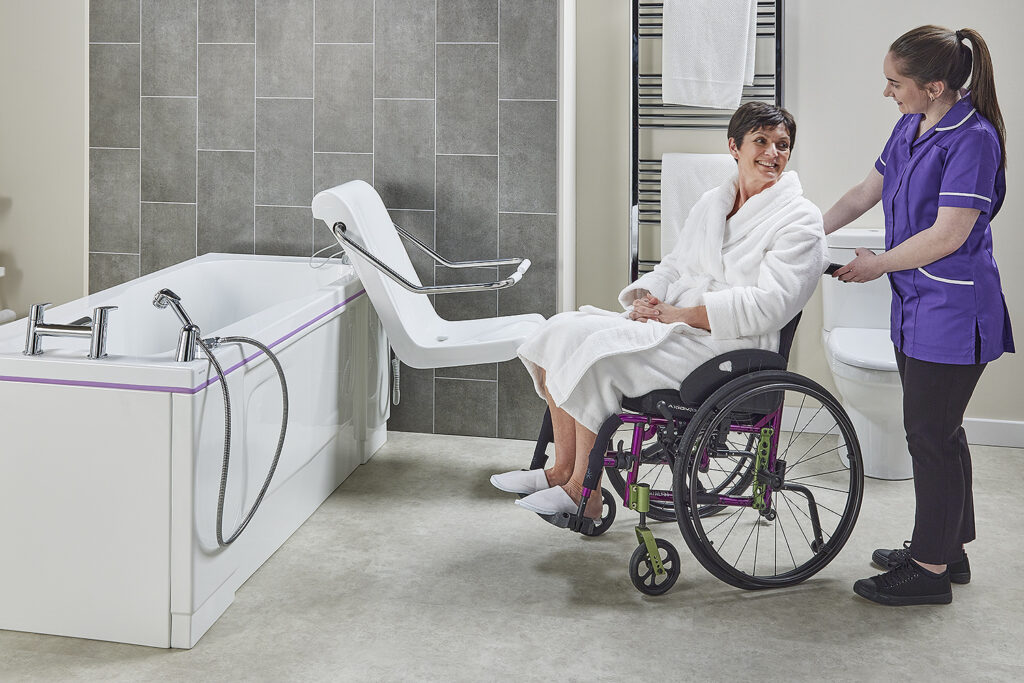Advice articleBlog, stories and news
Bathroom design considerations to help with wheelchair accessibility
)
By Adam Ferry Occupational Therapist
Whether you use a wheelchair occasionally to manage energy, or all the time to get from room to room, an accessible well-designed layout is key to promoting safety and independence, particularly in the bathroom.
Wheelchairs are often, or certainly have been in the past, the symbol of ‘disability’ with the image used on what were described as ‘disabled toilets’. Thankfully in recent times we’ve moved away from the idea that the person is disabled and realised that the environment is disabling.
How many times have you gone into a bathroom as a wheelchair user and been unable to reach fixtures or fittings, see yourself in the mirror or turn the chair without bumping into things? Accessible wheelchair design is absolutely about layout and space, but also about the little things that matter.
When designing your bathroom at home, as a wheelchair user, consider:
- Building regulations (Approved Doc M) provide minimum standards which are useful as a starting point.
- Height adjustable appliances, such as wash basins if the bathroom is used by multiple people in the household.
- Space should allow for comfortable movement and turning circles.
- Think about how you transfer from the wheelchair to toilet or shower chair for example, and make sure fixtures are positioned to support that.
- The doorway needs to be wide enough for you to access without scraping your hands if you self-propel.
- Make sure that items such as mirrors, controls, toilet roll etc are within easy reach or appropriate heights.
- Decide whether you prefer to bathe or shower, both are possible in an accessible bathroom.

Despite this advice and guidance, it’s not easy to consider all of the design features, and how to ensure that the bathroom is truly accessible whilst keeping it in line with your personal tastes.
At G360 they have the experience and marketplace access to do the leg work and work with you to provide what you need, as well as what you want, without the need to involve multiple contractors; saving you time, money and effort whilst maximising independence and dignity.
Contact us
Our caring and friendly team are always on hand to help answer any of your questions

![G360 Bathrooms [logo]](https://g360bathrooms.co.uk/wp-content/themes/g360-theme/assets/img/g360-logo-white.svg)